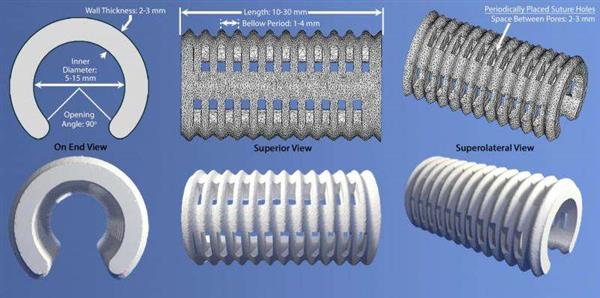Today we are able to witness and use numerous benefits of additive manufacturing technology in the field of medical science. Because the technology has been in news for a while and people sharing their experiences and writing testimonials more and more people are opening up to test this technology for their own use. However, the first 3D printing technology in the medical field happened few years ago, and saved lives of three babies.
Garrett, Ian and Kaiba, three babies were diagnosed with a terminal and incurable form of tracheobronchomalacia, condition that caused the windpipe to collapse and that was making breathing impossible for all the three of them. But doctors and researchers at the University of Michigan’s Mott Children’s Hospital came up with a solution that had saved the three lives. The doctors made, what they are calling, a 4D airway using 3D printing technology. Why is it calling it a 4D airway is because the 3D printed tracheal splint will be able to grow along with the child as he grows.
Glenn Green, M.D. and Associate Professor of Pediatric Otolaryngology [a medical department which deals with children’s Ear, Nose & Throat (ENT) region] told, ‘These cases broke new ground for us because we were able to use 3D printing to design a device that successfully restored patients’ breathing through a procedure that had never been done before.’
Dr. Green Glenn stated, ‘Before this procedure, babies with severe tracheobronchomalacia had little chance of surviving. Today, our first patient Kaiba is an active, healthy 3-year-old in preschool with a bright future. The device worked better than we could have ever imagined. We have been able to successfully replicate this procedure and have been watching patients closely to see whether the device is doing what it was intended to do. We found that this treatment continues to prove to be a promising option for children facing this life-threatening condition that has no cure.’
Glenn along with his colleague Scott Hollister, a professor of biochemical and mechanical engineering and associate professor of surgery, used CT scans and laser-based 3D printing technology to develop a custom tracheal splint for Kaiba Gionfriddo, 3 years back when he was about to have the surgery. The splint was sewn around Kaiba’s airways to expand the trachea and bronchus. The unique feature of this splint is that it will be absorbed by the body once it’s not needed.
“The first time he was hospitalized, doctors told us he may not make it out,” Kaiba’s mother April Gionfriddo told reporters. ‘It was scary knowing he was the first child to ever have this procedure, but it was our only choice and it saved his life.’
‘We were pleased to find that all of our cases so far have proven to improve these patients’ lives. The potential of 3D-printed medical devices to improve outcomes for patients is clear, but we need more data to implement this procedure in medical practice.’ Glenn says.
